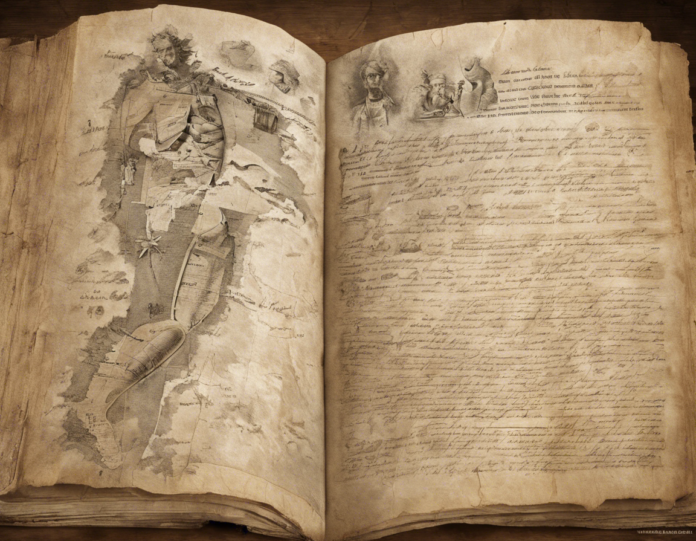Ancient civilizations have always captivated our imagination, offering us a glimpse into the lives, cultures, and achievements of our ancestors. From the majestic pyramids of Egypt to the intricately planned cities of the Indus Valley, these societies have left behind a rich legacy that continues to inspire and intrigue us to this day. In this blog post, we will delve into the history of some of the world’s most fascinating ancient civilizations, exploring their rise, achievements, and eventual decline.
The Rise of Ancient Civilizations
Agricultural Revolution and Early Settlements
The story of ancient civilizations begins with the agricultural revolution that took place around 10,000 years ago. As early humans transitioned from hunter-gatherer societies to settled agricultural communities, they laid the foundation for the development of complex civilizations. The ability to produce surplus food allowed for the growth of populations and the emergence of social hierarchies.
Mesopotamia: Cradle of Civilization
One of the earliest known civilizations to emerge was in Mesopotamia, the land between the Tigris and Euphrates rivers. The Sumerians, Akkadians, Babylonians, and Assyrians were among the many peoples who thrived in this fertile region. They built sophisticated cities, developed writing systems, and made significant advances in mathematics, astronomy, and law.
Egypt: Land of Pharaohs
In the Nile Valley, another remarkable civilization flourished. Ancient Egypt, with its iconic pyramids, temples, and intricate hieroglyphic writing, has captured the imagination of people for centuries. The Pharaohs ruled over a complex society that excelled in architecture, medicine, and the arts. The construction of the pyramids at Giza stands as a testament to their engineering prowess and organizational skills.
Indus Valley Civilization: Secrets of an Enigmatic Culture
In the plains of the Indus River in present-day Pakistan and northwest India, the Indus Valley Civilization thrived from around 3300 to 1300 BCE. Known for its well-planned cities, advanced drainage systems, and sophisticated craftsmanship, this ancient culture left behind a wealth of archaeological treasures that continue to puzzle historians and archaeologists.
Achievements and Innovations
Art and Architecture
Ancient civilizations were known for their artistic achievements and architectural marvels. From the colossal statues of ancient Egypt to the ziggurats of Mesopotamia and the intricate carvings of the Indus Valley, these societies expressed their beliefs and values through their creative endeavors.
Writing Systems and Literature
The development of writing was a hallmark of many ancient civilizations. The cuneiform script of Mesopotamia, the hieroglyphs of Egypt, and the yet-to-be-deciphered script of the Indus Valley are testaments to the intellectual sophistication of these cultures. Literature, ranging from epic poems to administrative documents, provided insights into the daily lives and beliefs of ancient peoples.
Technological Advancements
Ancient civilizations were pioneers in various fields of technology. The Egyptians mastered the art of mummification and built impressive pyramids using advanced engineering techniques. The Mesopotamians invented the wheel, the plow, and the sailboat, revolutionizing transportation and trade. The people of the Indus Valley developed sophisticated urban planning and water management systems, showcasing their ingenuity and foresight.
Decline and Legacy
Factors Leading to Decline
Despite their remarkable achievements, ancient civilizations eventually faced challenges that led to their decline. Environmental factors, such as droughts, floods, and soil depletion, could devastate agricultural societies. Invasions by foreign forces and internal conflicts also contributed to the downfall of many civilizations. The collapse of the Indus Valley Civilization and the successive conquests of Egypt and Mesopotamia by foreign powers mark the end of their respective golden ages.
Enduring Legacy
Though these ancient civilizations may have disappeared, their legacy endures. The legacies of ancient Egypt, Mesopotamia, and the Indus Valley continue to resonate in our society today. Their contributions to art, architecture, science, and governance have laid the foundation for modern civilization. By studying and preserving the remnants of these ancient cultures, we can gain valuable insights into our shared human past and the forces that shaped the world we live in today.
Frequently Asked Questions (FAQs)
1. What were the major ancient civilizations in the world?
- The major ancient civilizations included Mesopotamia, Egypt, the Indus Valley Civilization, China, Greece, and Rome.
2. What were some common features of ancient civilizations?
- Common features of ancient civilizations included urban centers, social hierarchies, agricultural economies, writing systems, and monumental architecture.
3. How did ancient civilizations impact modern society?
- Ancient civilizations made significant contributions to modern society in areas such as law, mathematics, astronomy, architecture, and governance.
4. Why did ancient civilizations decline?
- Ancient civilizations declined due to a combination of environmental factors, invasions, internal conflicts, and socio-political unrest.
5. What lessons can we learn from ancient civilizations?
- Studying ancient civilizations can teach us valuable lessons about sustainability, resilience, innovation, and the interconnectedness of human societies.
In conclusion, the study of ancient civilizations offers us a window into the past, allowing us to appreciate the achievements and challenges faced by our ancestors. From the mighty empires of Egypt and Mesopotamia to the enigmatic Indus Valley Civilization, these ancient cultures have left an indelible mark on human history. By unraveling the mysteries of the past, we can gain a deeper understanding of ourselves and the world we inhabit.

